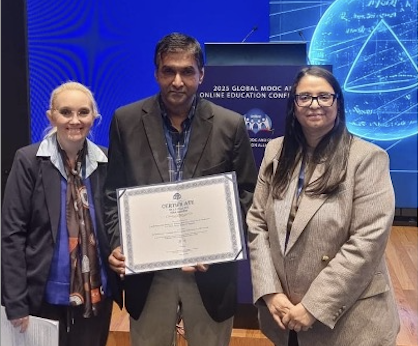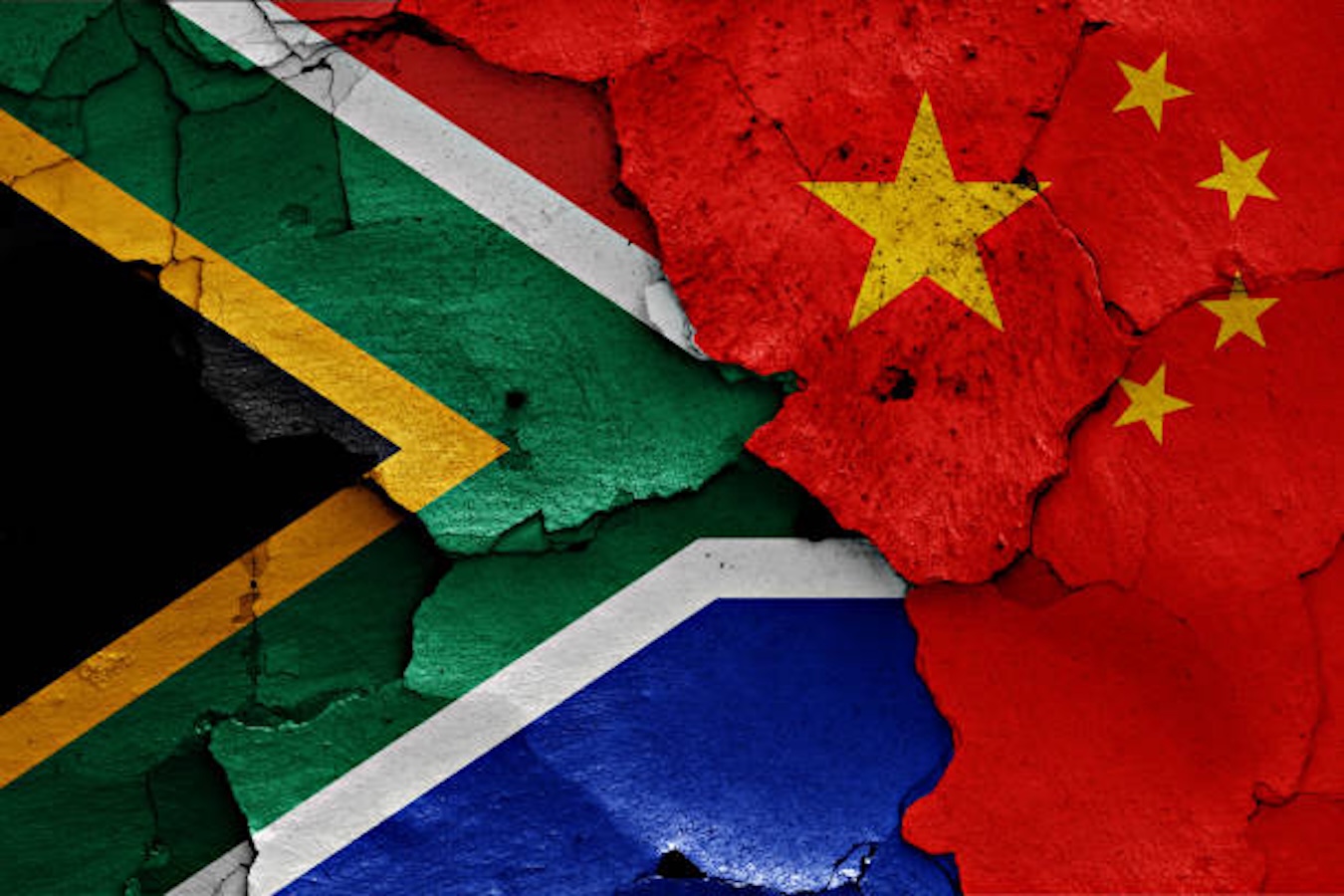Professor Tshilidzi Marwala is the Vice-Chancellor and Principal of the University of Johannesburg. He recently penned an opinion article published in The Sunday Times on 16 August 2020.
In 2019, the phrase of the year was ‘The Zondo Commission’, emblematic of the corruption that has become synonymous with South Africa. In 2017, the phrase ‘State capture’ was the word of the year‚ having been used more than 20‚000 times‚ according to the Pan South African Language Board (Pansalb). In 2000, long before it became something en vogue in South Africa, the term state capture was first used by the World Bank. While state capture is largely described in connection with the South African context, it was coined to describe situations where small corrupt groups use their influence over government bureaucrats to appropriate government decision-making power to reinforce their own economic objectives.
It is important to note that state capture is sometimes not intentional. It can result from the philosophical concept called information asymmetry, where one party (usually private individuals) know more than another party (usually government officials). Information asymmetry results with exploitation. For example, when Congo attained independence in 1960 under the leadership of Patrice Lumumba, there were only 30 university graduates for a country bigger than Western Europe. This was a recipe for state capture, and Mobutu Sese Seko seized power and handed it to his family and ethnic group.
In 2017, a report by the Public Affairs Research Institute (PARI) entitled the Betrayal of the Promise argued that the power elite in South Africa had violated the Constitution and that the then political project is unachievable in the existing legal framework. As the tales unfold and the rot is exposed, it is worth asking whether we could have uncovered this much quicker with artificial intelligence (AI). While AI can and has the potential to reveal, we will still be left with acts of corruption and malfeasance.
Since the creation of statehood, corruption has been a deviant characteristic. As the PARI report outlined, “What is clear is that state capture by shadowy elites has profound implications for state institutions. It destroys public trust in the state and its organs; it weakens key economic agencies that are tasked with delivering development outcomes, and it erodes confidence in the economy.” The repercussions of this are that there is distinct lack of trust in public institutions, and thus little will to pay tax or invest while criminality increases, and a brain drain becomes inevitable. Now, we see a fundamental shift in the global order – in part because of the coronavirus pandemic but largely because of the seismic changes of the Fourth Industrial Revolution (4IR). The 4IR is predicated on a confluence of the physical, digital and biological spheres through technologies such as artificial intelligence (AI), automation, biotechnology, nanotechnology and communication technologies. The coronavirus pandemic has been a useful yardstick to gauge our preparedness for this era. With necessitated national lockdowns, people and companies have had to embrace this new normal and swiftly adopt technologies to remain relevant. AI, which the 4IR is largely predicated on, is a technology that makes machines intelligent. A machine is regarded as intelligent if it can analyse complex information and extract insights using imagination. While computers traditionally relied on people to tell them what to do and how to react, AI is based on machines that are able to learn and make their own decision.
It is clear that we are in the 4IR. Given the large swathes of data we are faced with, there are potential solutions to many of our deep-seated issues, including the scourge of corruption. The fears around job losses and humans made irrelevant is because, through AI, machines are able to do tasks much quicker and with greater precision. In an extreme case, in China, for instance, an anti-corruption AI system called ‘Zero Trust’, developed by the Chinese Academy of Sciences, has been used to monitor and evaluate the lifestyle of government officials. This system can access more than 150 protected databases in central and local governments. Since 2012, Zero Trust has caught 8,721 government employees engaging in misconduct such as embezzlement, abuse of power, misuse of government resources and nepotism. However, this has come under much criticism for not being able to explain the process behind identifying corrupt individuals, and it still heavily relies on humans, which could make much of its work superfluous if these individuals are also unscrupulous. Then, of course, are the valid concerns around privacy.
Yet, there are various ways AI can be deployed in less intrusive means. For instance, we can deploy AI systems to analyse data from multiple sources and identify irregular activity associated with third parties, employees, and customers. AI is much more proficient in wading through emails, text messages or audio files. The technology is premised on its ability to recognise patterns and thus to identify anomalies. It also can predict future risks and identify fault lines where corruption is possible. The World Bank, alongside Microsoft’s Research Group, has already tapped into the potential of AI to detect patterns of fraud and corruption. While this is still in a nascent stage, there is potential to expand on it. The interrogation of datasets from other international organisations, national procurement data, and corporate information, could feed into AI to aid in making better public spending decisions, which could eventually be scaled down for governments.
AI also has the potential to create a fairer justice system that would eliminate judges and deliver more impartial court rulings. For instance, in 2008, Judge John Hlophe was referred to the Judicial Service Commission for “an improper attempt to influence this Court’s pending judgement in one or more cases”. This, of course, would not be a worry with an AI system. Judges make risk assessments to hand down verdicts and sentences. This is based on various factors such as the evidence, how the attorneys presented this and how witnesses testify. AI systems make more rational and optimised decisions in general. Here, judgements can be made by taking into account of the evidence, the defendant’s history and come up with a recidivism score, which estimates whether they are likely to re-offend, to determine a sentence, for instance.
As questions around corruption in the region of R3 billion related to the R500bn the government allocated to ease the impact of COVID-19 mount, citizens understandably are demanding greater transparency around the process for awarding government contracts. An example proposed by Lusanda Raphulu, a partner at law firm Bowmans, is to apply AI algorithms in supply chains, especially in the awarding of tenders. The AI algorithms introduce objectivity and consistency to decision making on tenders, thus eliminating human bias and reducing the possibility of unethical decision-making.
Our country has seen enough of the scourge of corruption – or what we may call feeding at the trough. The time has come to harness the latent power of AI and put it to use to ensure ethical behaviour and integrity in practices that seemingly lend themselves to greed and inherently corrupt behaviour. AI has the potential to be the custodian of social justice. We have the abilities and opportunities in this country to use these capabilities to uncover corrupt practices. It is unclear why we do not harness these capabilities and put it to good use. In years to come, people will speak about millions spent on investigations, yet we can use the less costly AI to uncover and prevent these transgressions as well as safeguard the coffers. In the 2011 novel Brushstrokes of a Gadfly, author E.A. Bucchianeri wrote, “It’s not unpatriotic to denounce an injustice committed on our behalf, perhaps it’s the most patriotic thing we can do.”
*The views expressed in the article is that of the author/s and does not necessarily reflect that of the University of Johannesburg.




